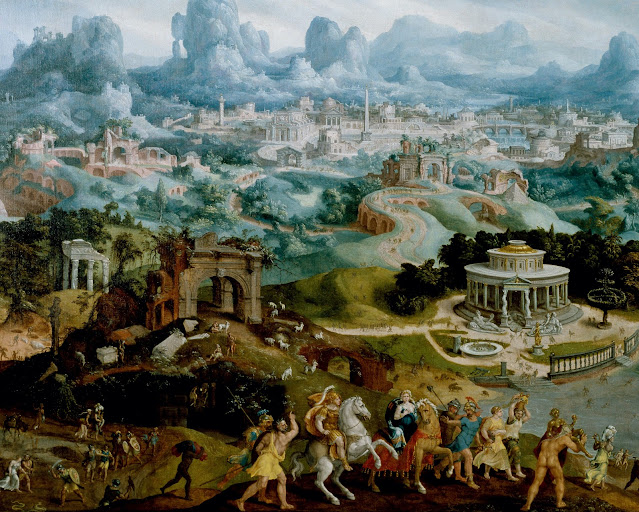Arnold Böcklin
(1827 - 1901)
Arnold Böcklin was a Swiss symbolist painter, born in Basel. His father, Christian Frederick Böcklin (b. 1802), was descended from an old family of Schaffhausen, and engaged in the silk trade. His mother, Ursula Lippe, was a native of the same city. Arnold studied at the Düsseldorf academy under Schirmer, and became a friend of Anselm Feuerbach. He is associated with the Düsseldorf school of painting. Schirmer, who recognized in him a student of exceptional promise, sent him to Antwerp and Brussels, where he copied the works of Flemish and Dutch masters. Böcklin then went to Paris, worked at the Louvre, and painted several landscapes.
He’s mostly famous for the “Isle of the Dead you can see here:
https://www.goodreads.com/topic/show/19733288-march-2019-symbolism?page=2#comment_19073152059
Odysseus and Polyphemus
1896
Oil and tempera on panel
66 x 150 cm
Museum of Fine Arts Boston
Escaping from the island of the Cyclopes—one-eyed, ill-tempered giants—the hero Odysseus calls back to the shore, taunting the Cyclops Polyphemus, who heaves a boulder after the boat. Unlike Academic colleagues who treated ancient mythology with reverence and solemnity, Böcklin often played up strange, grotesque, and even ridiculous elements of these stories, conjuring a pre-Classical world governed by violence and lust.
https://commons.wikimedia.org/wiki/File:Arnold_Böcklin_-_Odysseus_and_Polyphemus.jpg




.jpg)







,_c._1880_(possibly_later),_BF36,_Barnes_Foundation.jpg)











.jpg)




.jpg)



_-_Prometheus_-_KMSK_Brussel_25-02-2011_12-45-49.jpg)







.png)